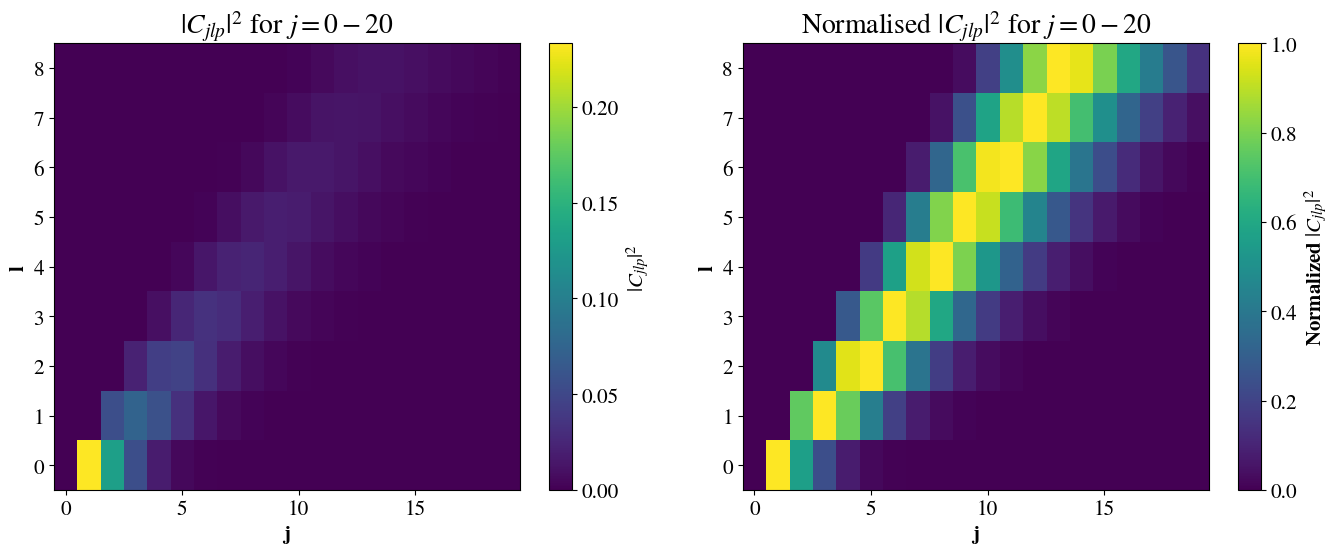![Figure 1: Sketch of the focusing of a light beam (here represented only by its electric field) by an aplanatic lens.[@nanooptics]](Figures/aplanatic_lens.png)
In the previous sections, I have shown the plane-wave expansions in multipoles for both of the approaches for comparison. In real scattering experiments, one often works with waves that are cylindrically symmetric and not plane. These are beams that are more complicated, as they can be decomposed into many plane waves[@xavi]. This section will describe how to model a monochromatic, non-paraxial, and cylindrically symmetric beam with a well-defined helicity using the aplanatic lens model, which is explained both in [@nanooptics] and [@xavi]. Then, a brief description of the implementation will be given along with different visualisations of the fields.
The idea of the aplanatic lens model is to describe a focused beam as a transformation by a lens of an incident beam. In later chapters, a scattering sphere will be placed in the focal point of this lens, \(f\), making the model quite realistic. The focusing is illustrated in Fig. 1.
![Figure 1: Sketch of the focusing of a light beam (here represented only by its electric field) by an aplanatic lens.[@nanooptics]](Figures/aplanatic_lens.png)
I will not go through the derivation of the expression for the
focused field in great detail, but only lay out the overall steps.
The model assumes the so-called sine condition, which states that the
refraction by the aplanatic lens is equivalent to that of a perfect
sphere with radius \(f\). Additionally,
conservation of intensity is assumed during refraction. \(\mathbf{E}_{inc}\) is then transformed from
cylindrical coordinates into spherical after the lens. Some
simplifications are made to ensure the conservation of helicity \(p\) and angular momentum \(J_z\). This is important, as one can then
define an incident field and be certain that its important parameters
are still conserved after focusing (helicity \(p=1\) will be used in this study).
The focused field, which naturally depends on the expression of the
incident field, can be expressed as an expansion in multipoles. In [@xavi], the multipolar
decomposition of a Laguerre-Gaussian beam is provided. The modes of such
a beam, \(\mathrm{LG}_l^q\), are
cylindrically symmetric solutions of the paraxial equation. \(q\), the so-called radial index, is assumed
to be 0 throughout this report, while \(l\in
\mathbb{Z}\), which is related to the AM content, will be
varied.
When focused by an aplanatic lens, an electric field containing LG modes
becomes a solution of not only the paraxial equation but also Maxwell’s
equations[@xavi]. Such a
field with a single LG mode has the expression \[\label{eq:Efoc}
\mathbf{E}_{foc}=\sum_{j=\abs{m_z}}^\infty
i^j\sqrt{2j+1}C_{jm_zp}\left[
\mathbf{A}_{jm_z}^{(m)}+ip\mathbf{A}_{jm_z}^{(e)}\right]\]
where \(m_z=l+p\). The linear
combination of the multipoles in the brackets is a multipole with a
well-defined helicity, which will be used later. Note that the lowest
multipolar order is \(\abs{m_z}\).
\(C_{jm_zp}\), the coefficient whose
absolute value squared describes the content of each multipole in the
expansion, is given by the following expression: \[\begin{aligned}
\label{eq:C_foc}
C_{jm_zp}&=\frac{f\mathrm{e}^{-ikf}}{2\pi}\sqrt{\frac{n_1}{n_2}}\cdot\\&\int_0^{\theta_k^{m}}
\d\theta_k\sin\theta_k\sqrt{\cos\theta_k}d^j_{m_zp}(\theta_k)N_l^q
\mathrm{exp}\left[-\frac{(f\sin\theta_k)^2}{w^2}
\right](f\sin\theta_k)^l L_q^l\left(\frac{2(f\sin\theta_k)^2}{w^2}
\right)\left(\frac{\sqrt{2}}{w}\right)^{l+1}
\end{aligned}\] The integral is carried out over \(\theta_k\), a momentum-space representation
of \(\theta\). This range is defined by
the numerical aperture (NA) of the lens. Everything from \(N_l^q\) and after is the expression of the
\(\mathrm{LG}\)-mode with a waist \(w\), also including a generalized Laguerre
polynomial. \(N_l^q\) is a
normalisation factor, and \(d^j_{m_zp}(\theta_k)\) is the reduced
Wigner rotation matrix - a neat transformation that ensures that the
scalar wave functions are always eigenstates of \(\mathbf{J}^2\) and \(J_z\).
Using the multipoles as expressed in Sec. [2_rose], focused fields can be plotted in 3D.
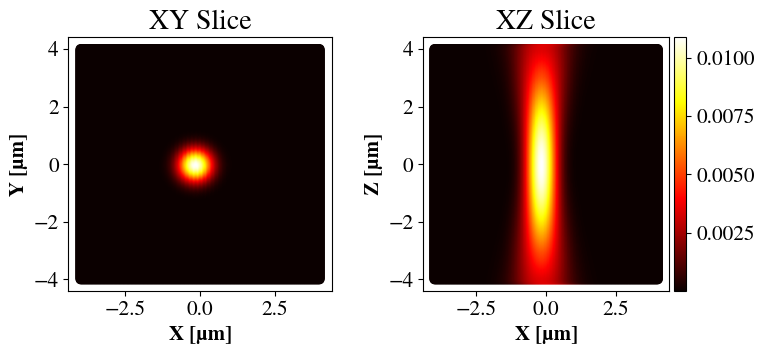
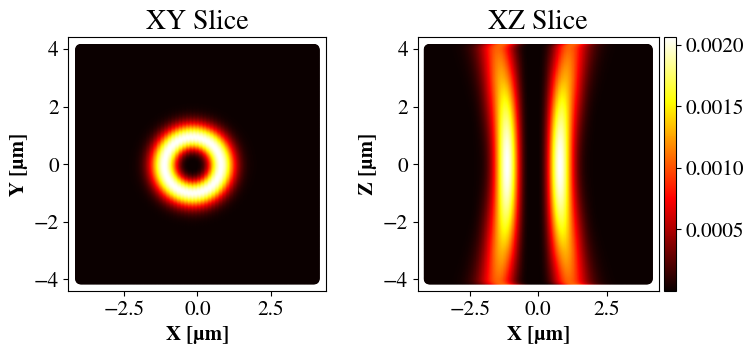
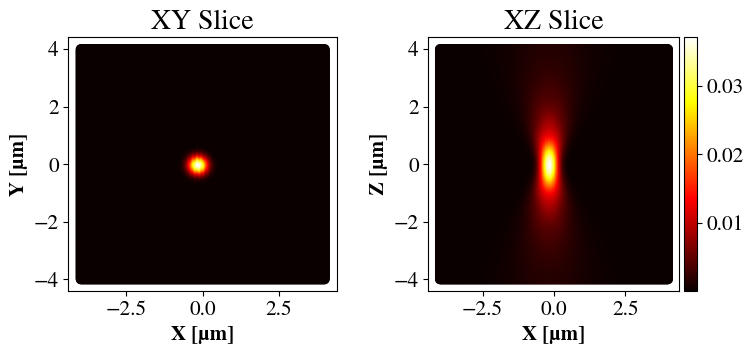
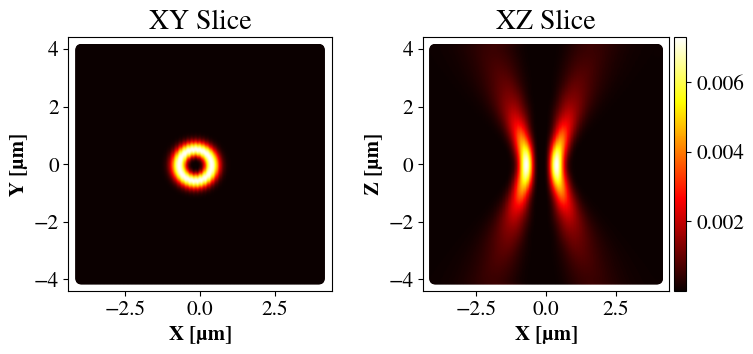
Examples of focused beams are shown in Fig. 6 for two values of NA. Clearly, higher NA gives a tighter focus, judging by the spot sizes for the \(l=0\) cases and the curvatures for \(l=2\). An interesting feature is that when \(l=0\), the LG beam corresponds to a Gaussian beam, having highest intensity in the center. For \(l>0\), the beam is toroidal with no intensity in the center. An important point is that one can in principle vary the beam waist independently of the NA and \(l\). However, since \(l\) affects the beam shape and the NA essentially dictates the size of the lens, I have chosen \(w\) such that the beam always spans the entire lens but never exceeds it (which would mean that the beam was cut off).
Another interesting study is the multipolar content of the beams,
i.e. the modal distribution in the expansions. This will be important
later on, since the multipolar content directly impacts the modes
excited during scattering.
For NA=\(0.5\) and \(0.9\), the multipolar content, \(\abs{C_{jm_zp}}^2\), is plotted for
incident beams with values \(l=0, 2,
4\) and 6 in Fig. 11. Note
that there are no multipoles of order \(j<l+p\). It is clearly seen that the
more tightly focused light (NA=0.9) contains fewer, lower-ordered
multipoles. As \(l\) increases, both
distributions shift to higher order and become broader. A tendency
toward a symmetric bell-curve is seen, especially for NA=0.5.
Since one rarely works with dry microscope objectives with NA\(>0.9\), that is not investigated. In any
case, it is impossible to obtain a tightly focused LG beam composed of a
single multipole.
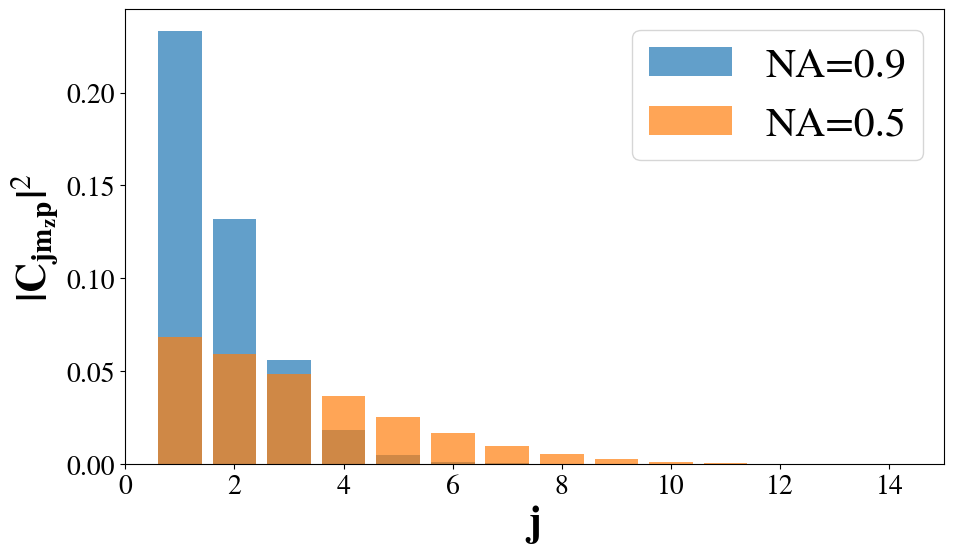

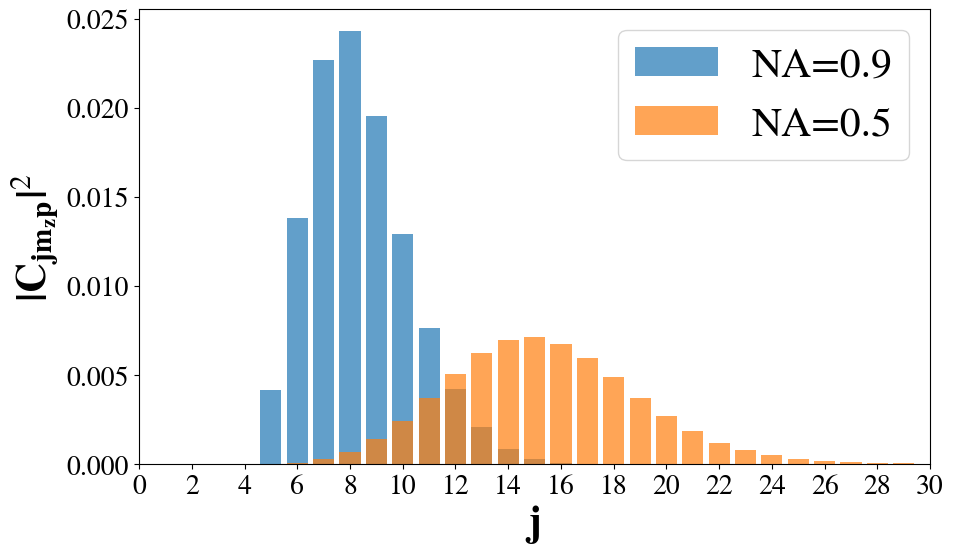
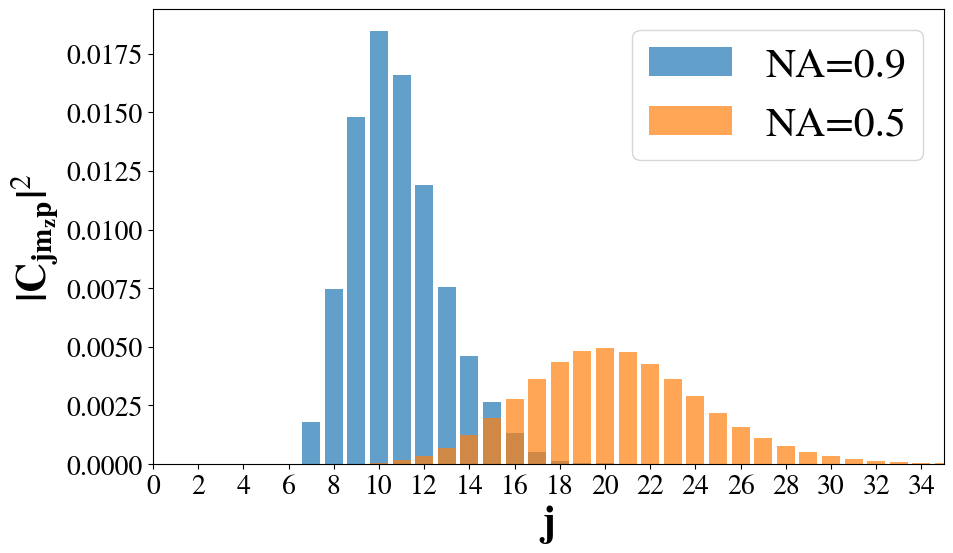
In fact, for NA=0.9, the multipolar distribution is shown for l=0 to l=8 in Fig. 12, showing the same trend as Fig. 11 that the distribution broadens and shifts toward higher \(j\).
